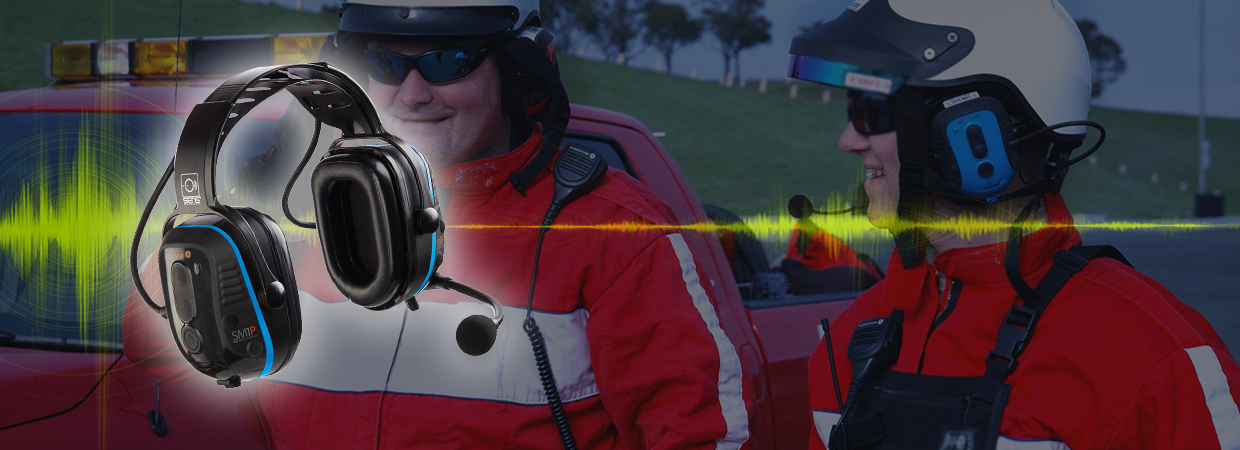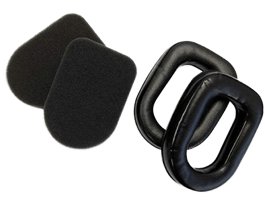- Home
- Blog
- Headset Maintenance
- 3 Ways to Extend the Life of Your Headset

When working in an industrial environment, there is no such thing as being gentle with your hearing protection headset. They get dirty, dusty, grimy, and banged up for 8-12 hours or more a day. The ear cushions may get cracked, warped, or just plain dirty. Whatever the reason, these headsets often get replaced due to damage or lack of upkeep. So, how can you extend the life of your hearing protection headset?
These headsets are a big investment and you do not want to replace them too frequently or else the costs could rack up. Rather, a small amount of maintenance can go a long way. There are many different levels of upkeep, but in general, there are a few key practices for keeping your headsets in good working condition.
Method 1: Cleaning Your Headset
The first key method of upkeep is typically the hardest – keeping your headset clean. As mentioned earlier, industrial environments are often very dirty, gritty, dusty, and/or grimy. While safety and efficiency take precedence, cleanliness is not always the top priority. However, basic cleaning of your headset on a regular basis can significantly extend its life. These simple yet effective guidelines can save you time and money down the road:
NOTE: Submerging your headset under any liquid can damage the technology inside. DO NOT submerge.
- Use a soft damp cloth with water and mild soap on the outside pieces of the headset, including the headband and plastic components. DO NOT get water into the ear cups.
- Examine the inside of the ear cups for debris. DO NOT push any debris into the ear cups. Gently remove any debris before wiping them down.
Method 2: Replace Your Headset Ear Cushions
The ear cushions are arguably the most important aspect of your headset, as they are the barrier between your ears and potential hearing loss. Therefore, proper maintenance of ear cushions is crucial, which makes the second method replacement of your headset’s ear cushions. An improperly functioning ear cushion can impact the comfort and function of your headset, reducing the effectiveness of your hearing protection.
Sensear’s ear cushions are designed to be replaceable and easily removable. They should be replaced every six months or so. As ear cushions get older, they naturally degrade. While new ear cushions are soft, pliable, and conforming to the shape of your ears, older cushions have the following attributes:

- Hard or rigid and showing signs of deformity
- Appear to shrink or warp around the edges
- Tears or cracks
- Dirty foam
Sensear’s Smart Muff Hygiene Kit replacements allow you to quickly replace old and worn-out ear cushions, extending the life of your safety and communication headsets.
Method 3: Proper Storage of Your Headset
The third method of maintenance for your headset is properly storing it and protecting it from accidents, the environment, and any other potential hazards. Typical storage is anywhere out of direct sunlight, as ultraviolet rays from the sun can cause the plastic to crack/degrade over time, and in a room-temperature area that is well-ventilated. Furthermore, headsets with a rechargeable battery should not be stored in high-temperature environments for the risk of permanently reducing the life of the battery.
Sensear’s Charging Rack is the perfect solution for keeping your Sensear headsets fully charged and properly stored. It is a heavy-duty industrial charging solution that allows for charging up to 45 headsets. This is especially convenient for companies with numerous headsets in operation at any given time on multiple shifts and/or plant tours.
Proper Maintenance Will Save Your Headset
Hearing protection headsets are a critical component of hearing safety programs in high-noise environments. Frequent replacement of these headsets due to improper maintenance can significantly increase expenses. With proper cleaning, replacing parts, and safe storage, you can extend the life of your hearing protection headset.









